blog
Book Review: Hanoi Streets 1985-2015: In The Years of Forgetting by William E. Crawford
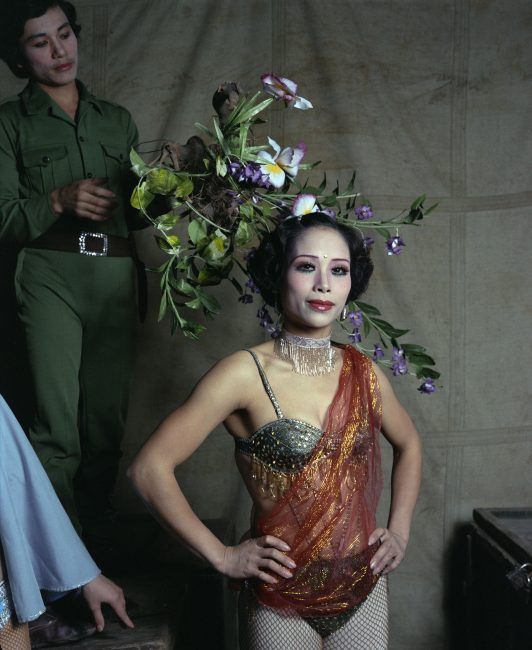
Circus Performer, 1988
Vietnam has always had a somewhat special place in my heart, even before I set foot in that country for the first time in the early 1990s. It had to do with images from the Vietnam War which, I learned only many years later, is in Vietnam called the American War – a term also used in this book. I was fascinated by how exotic (to my Swiss eyes) the Vietnamese looked, how cultured they seemed to be. To me, the Far East always stood for a romantic longing (the impenetrable mysteries of the Orient) that over the years that I spent in Southeast Asia became replaced by a more realistic take on things Asian and the pragmatic, highly materialistic Asians.
Hanoi Streets 1985-2015: In The Years of Forgetting allows me to travel back in time, in my imagination, that is. Many scenes depicted in this very well done tome I have seen too. Not the same of course but similar ones. And they do fill me once again with this strange romantic longing from many years ago. Yet there are many other shots that showed me what I had never seen. One that particularly stands out shows a woman preparing to be photographed (p. 145).
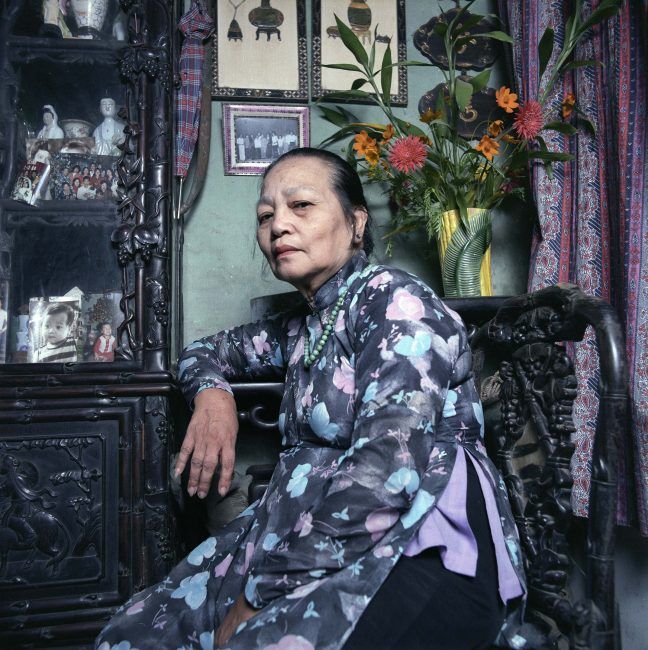
Mother of Soldier Missing In Action, 1986
Hanoi Streets 1985-2015: In The Years of Forgetting is an extraordinary book in the sense that it not only documents lots of façades and intriguing scenes from Hanoi’s streets – not many of the people who look into the camera feel obliged to say “cheese” – but provides information about the photographer’s personal motives (at least the ones that he is aware of) and about his relationship with Vietnam.
“I had no ideological point of view: just a photographer’s curiosity about how things might look and people might behave. I wasn’t interested in hearing about the “lessons of Vietnam,” which always struck me as dangerously oversimplified, at best. In the late 1960s, I’d marched in protest against the War, but my draft number never came up and my sense of urgency largely disappeared. I don’t know what would have become of me had my number been called. In the end, the War never claimed me – but that was a question of luck, not a demonstration of character.”
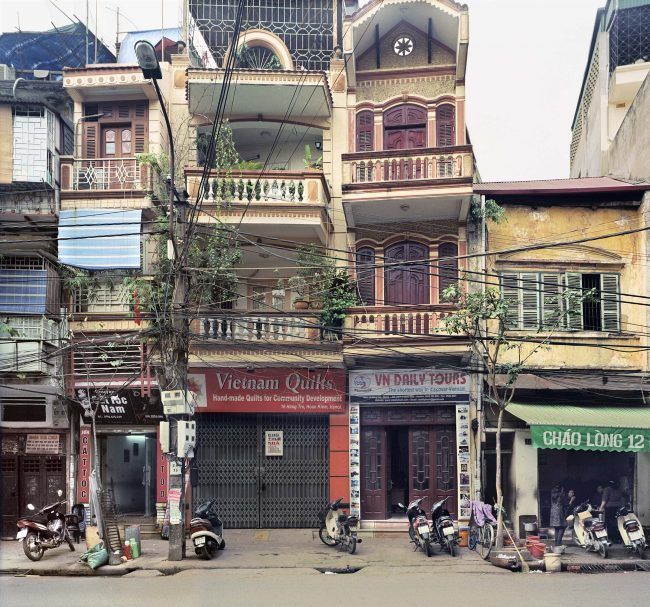
Hàng Tre (Bamboo Street), 2009
It’s descriptions like these that I would wish more often to be presented with for only with this kind of information I do actually have a chance to see (or at least imagine) what the photographer has seen. Pictures alone I consider not helpful (I’m speaking of documentary photography not of advertising) for I will then only bring to them what is already stored somewhere in my mind.
William E. Crawford is a documentary photographer and this is how he describes his work. “As a documentary photographer, I see my work as a means of understanding and remembering culture and society through the making, selection, and arrangement of images. Unlike photojournalism, which is interested in the theater of the moment, documentary photography tends to take a longer view on things.”
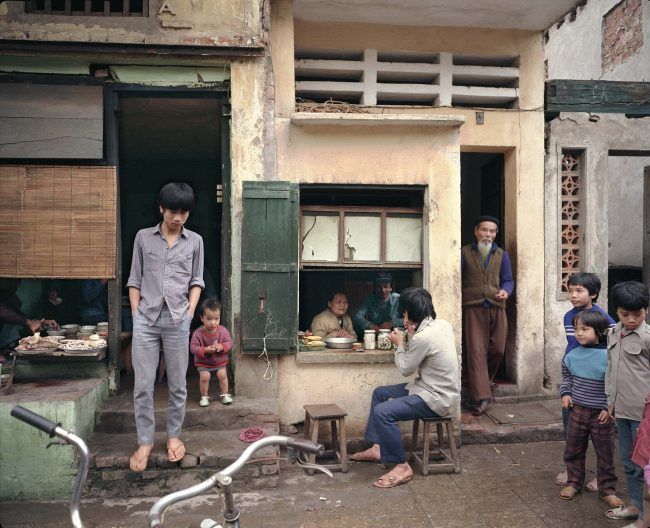
72 Mã Mây (Rattan Street), 1988
And, it attempts to present things in context which here means that his pictures are accompanied by relevant background information – on his first trip to Vietnam, on key historical events, the climate, the bicycles (I felt glad to learn that I was not the only one who got run over by a bike in Hanoi’s streets), motorbikes and quite some other interesting stuff.
My particular attention caught the title “Rambo Arrives” that deals with the question of American POWs (Prisoners Of War) or MIAs (Missing In Action). Most people would probably assume that, by the late 1980s, there were no more POWs/MIAs in Vietnam, yet some members of Congress, under pressure from POW/MIA families, couldn’t let go. A truly hilarious meeting between one of the Rambo Delegation and their Vietnamese counterparts Crawford sums up with “I’d never met two groups more fundamentally unable to figure one another out.”
Hanoi Streets 1985-2015: In The Years of Forgetting I consider most suitable in order to further mutual understanding. “The readiness is all,” says Horatio in “Hamlet”.
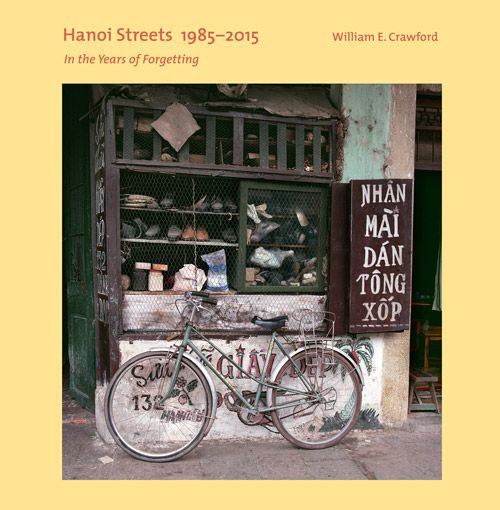
Hanoi Streets 1985-2015: In The Years of Forgetting
Photographs and text by William E. Crawford
Images Publishing, Mulgrave, Victoria 3170, Australia
www.imagespublishing.com
Location: Online Type: Book Review
Events by Location
Post Categories
Tags
- Abstract
- Alternative process
- Architecture
- Artist Talk
- Biennial
- Black and White
- Book Fair
- Car culture
- charity
- Childhood
- Children
- Cities
- Collaboration
- Cyanotype
- Documentary
- environment
- Event
- Exhibition
- Family
- Fashion
- Festival
- Film Review
- Food
- Friendship
- FStop20th
- Gun Culture
- Italy
- journal
- Landscapes
- Lecture
- love
- Masculinity
- Mental Health
- Museums
- Music
- Nature
- Night
- photomontage
- Podcast
- Portraits
- Prairies
- River
- Still Life
- Street Photography
- Tourism
- UFO
- Wales
- Water
- Zine

Leave a Reply